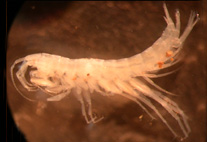Abstract
A new species of Polia Ochsenheimer, 1816, Polia minae sp. n., related to P. praecipua (Staudinger, 1895) and P. sublimis (Draudt, 1950) from northeastern Sichuan province, China is described. Adults and male and female gentalia of P. praecipua (Staudinger, 1898), P. praecipua angusta Hreblay & Ronkay, 1998, and P. sublimis (Draudt, 1950) are figured. Lectotypes and paralectotypes of P. praecipua praecipua and P. sublimis are designated. Polia is a well defined and complex noctuid genus in the tribe Hadenini with a Holarctic distribution. In the Palaearctic region, Polia is represented by 25, mostly large or medium-sized moths. The highest species richness is found in the Himalayan region. European species of Polia was recently revised by Hacker et al. (2002) with the check list of the know Palaearctic species. Recent collecting trips to China provided additional Polia material, including long series of P. praecipua and P. sublimis. During the study of those specimens, a third, externally different species was discovered by comparing of the genitalia of P. minae sp. n., with P. praecipua and P. sublimis. The moths studied were all collected at ultraviolet lights. Fifteen male and female genitalia dissections follows Lafontaine (2004) and slides were mounted in euparal. The abdominal integument was cut lengthwise, descaled, and slide mounted. Wild M3Z microscope and Canon EOS 350D camera were used to produce images. For systematic classificaton we follow Lafontaine & Schmidt (2010). Nomenclature used in this study relied upon taxonomic experts and relevant literature Draudt (1950); Boursin (1964); McCabe (1980); Chen (1982 and 1999); Yoshimoto (1995). Hreblay & Ronkay 1998; Hreblay et al. 1998; and Gyulai & Ronkay (2001). Repository acronims are as follows: AFM = Alessandro Floriani (Milan, Italy); GBG/ZSM = Gottfried Behounek (Grafing)/Zoologische Staatssammlung, München (Germany); NKM = Natukundemuseum, Berlin; NRCV = Nature Research Centre (Vilnius, Lithuania); PGM = Peter Gyulai (Miskolc, Hungary); WSM = Wolfgang Speidel (München, Germany); ZFMK = Zoologisches Forschungsmuseum, A. König, Bonn.

